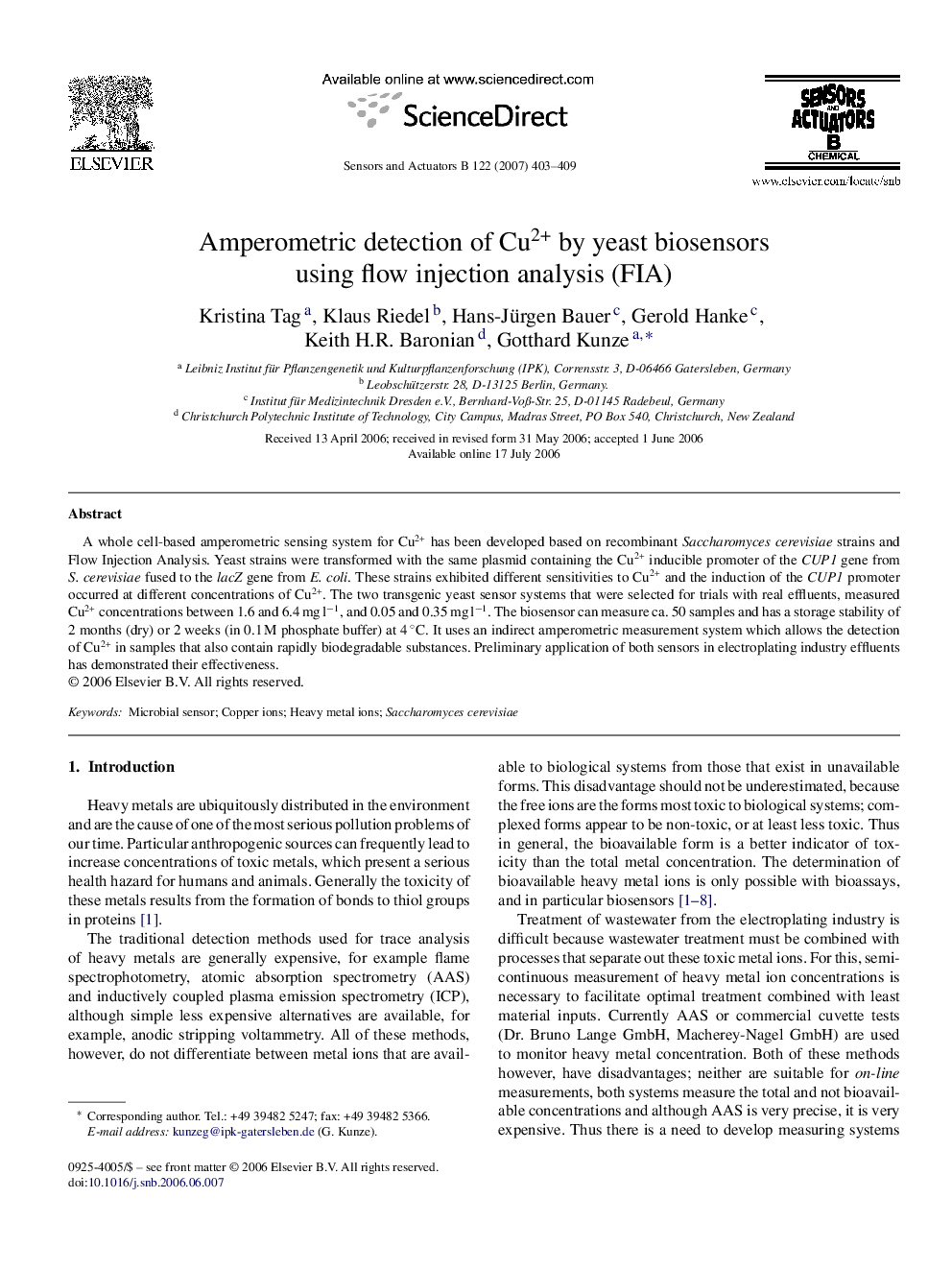| Article ID | Journal | Published Year | Pages | File Type |
|---|---|---|---|---|
| 746011 | Sensors and Actuators B: Chemical | 2007 | 7 Pages |
A whole cell-based amperometric sensing system for Cu2+ has been developed based on recombinant Saccharomyces cerevisiae strains and Flow Injection Analysis. Yeast strains were transformed with the same plasmid containing the Cu2+ inducible promoter of the CUP1 gene from S. cerevisiae fused to the lacZ gene from E. coli. These strains exhibited different sensitivities to Cu2+ and the induction of the CUP1 promoter occurred at different concentrations of Cu2+. The two transgenic yeast sensor systems that were selected for trials with real effluents, measured Cu2+ concentrations between 1.6 and 6.4 mg l−1, and 0.05 and 0.35 mg l−1. The biosensor can measure ca. 50 samples and has a storage stability of 2 months (dry) or 2 weeks (in 0.1 M phosphate buffer) at 4 °C. It uses an indirect amperometric measurement system which allows the detection of Cu2+ in samples that also contain rapidly biodegradable substances. Preliminary application of both sensors in electroplating industry effluents has demonstrated their effectiveness.
